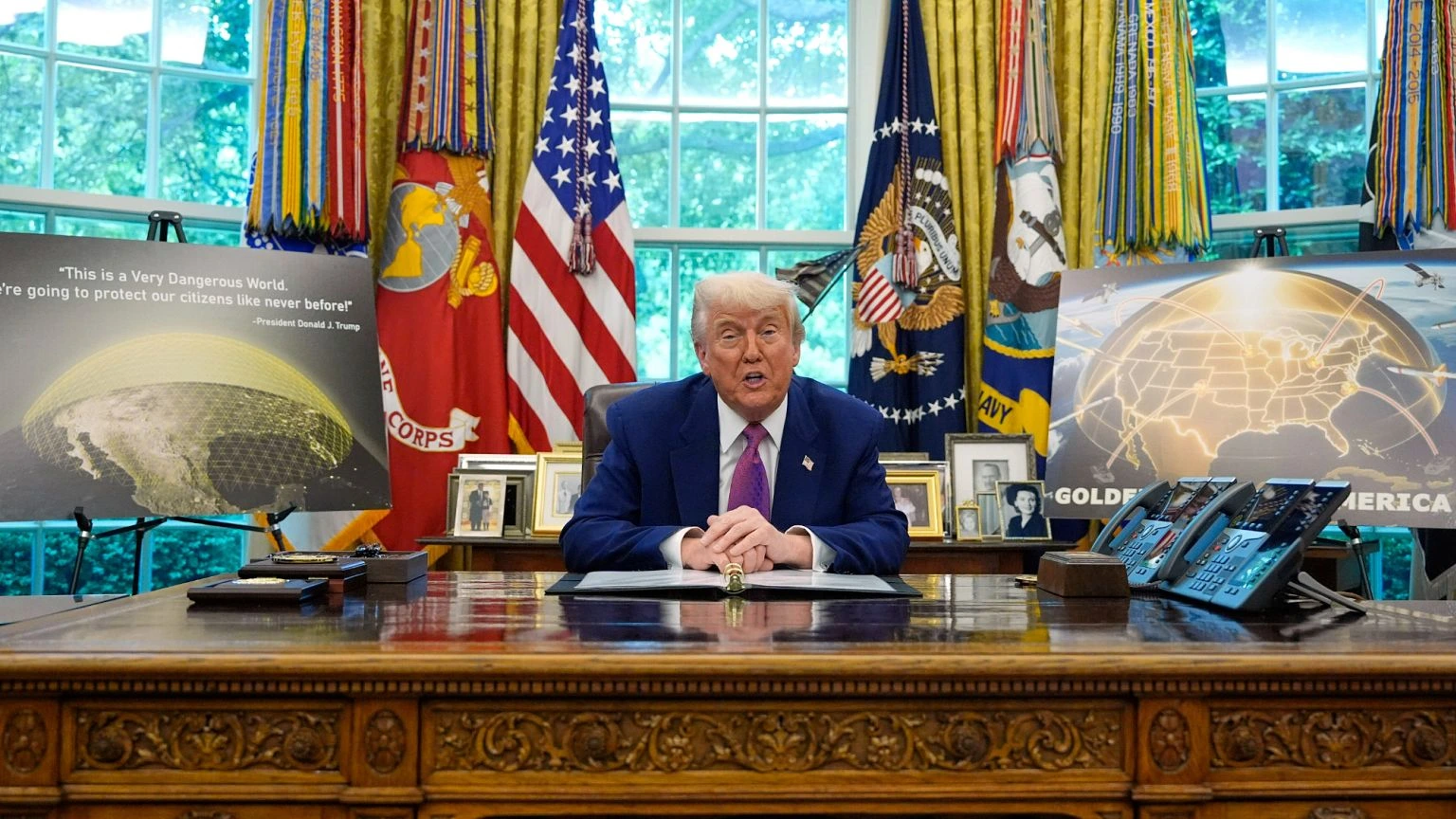Trump’s Golden Dome

In a notable action indicating a revitalized emphasis on national defence, US President Donald Trump has announced a substantial missile defence program named the “Golden Dome.” The president declared that his government has sanctioned the design and preliminary financing for this ambitious system, aimed at protecting the United States from next-generation aerial threats, including ballistic missiles, cruise missiles, and space-launched weapons. The Golden Dome, with an estimated total cost of $175 billion, is one of the costliest and strategically vital military initiatives in US history.
During a news conference in Washington, D.C., President Trump said that the system would be completely operational before the end of his current term. “We shall construct the most sophisticated missile defence system the world has ever witnessed,” Trump proclaimed. “It will safeguard every segment of American territory from threats originating from land, sea, air, and space.” He underscored the initiative’s importance, referencing swift progress in missile technology by geopolitical adversaries like China and Russia.
The Golden Dome idea draws inspiration from historical and futuristic defence doctrines, integrating components such as space-based interceptors, sophisticated radar arrays, and artificial intelligence-enhanced tracking systems. Although specifics regarding the system’s design are classified, top defence officials characterized it as a multi-tiered defensive framework capable of intercepting threats at different phases of their trajectory, boost, midcourse, and terminal.
President Trump has consistently expressed apprehensions regarding the susceptibility of the U.S. homeland to sophisticated missile systems, especially hypersonic missiles that exceed Mach 5 in velocity and exhibit unpredictable manoeuvrability. Upon commencing his second presidential term, he reiterated his dedication to enhancing national defence capabilities, prioritizing the creation of a modern missile shield.
The administration has allocated an initial $25 billion to initiate design, research, and preliminary construction. The complete extent of the project is anticipated to necessitate $175 billion in the forthcoming years. Experts warn that the true cost may increase substantially in the coming decades, especially when new technologies are developed and integrated into the system.
Defence analysts have observed that the timing of the release aligns with increasing apprehension within the Pentagon concerning the United States’ capacity to deter and defend against emerging threats. In recent months, high-ranking military officials have consistently voiced apprehension that the current missile defence infrastructure, primarily established in the late 20th century, is obsolete and insufficient against the advanced weaponry created by possible rivals.
A 2024 Department of defence study indicates that China has effectively tested several hypersonic glide vehicles and fractional orbital bombardment systems, while Russia persists in the deployment of its Avangard missile system, which can engage targets at extraordinary velocities with limited notice. These advancements have diminished the efficacy of conventional missile interception systems, necessitating immediate innovation in defence strategy.
Opponents of the Golden Dome proposal have raised concerns over its viability, highlighting both technological and financial obstacles. They contend that establishing an infallible defence against a wide range of missile threats, particularly those deployed from orbit or employing sophisticated evasion methods, may prove to be an elusive objective. Concerns have been expressed regarding the substantial financial load, which may redirect resources from other urgent domestic requirements.
Nevertheless, proponents contend that the expense is warranted due to the existential peril presented by contemporary missile technologies. They reference historical precedents, including the Strategic Defence Initiative (SDI) of the 1980s, an ambitious although ultimately unfulfilled program intended for space-based missile defence. Proponents of the Golden Dome assert that contemporary technical innovations, especially in artificial intelligence, satellite surveillance, and directed-energy weaponry, render such a system not merely feasible but imperative.
The plan has already provoked international discourse, with certain foreign officials voicing concerns that the implementation of such a system could trigger a new weapons race. Analysts propose that adversaries like as China and Russia would react by hastening their weapons development or implementing countermeasures intended to circumvent or surpass U.S. defences.
The project is anticipated to invigorate defence contractors and technological companies, potentially initiating a new phase of military innovation. Firms focused on aerospace engineering, cybersecurity, and autonomous systems are positioned to significantly influence the development of the Golden Dome’s components.
Although the schedule for complete deployment is ambitious, President Trump’s assurance of finalizing the system by the conclusion of his presidency underscores the urgency and strategic significance he attributes to national security. Should it succeed, the Golden Dome has the potential to transform the global military equilibrium and position the United States as the unequivocal leader in missile defence technology.
In the forthcoming months, Congress will be essential in shaping the speed and extent of the initiative, as discussions over funding distributions and strategic supervision ensue. The statement signifies a decisive advancement in U.S. defence policy, aspiring to enhance national security in an increasingly volatile global landscape.











